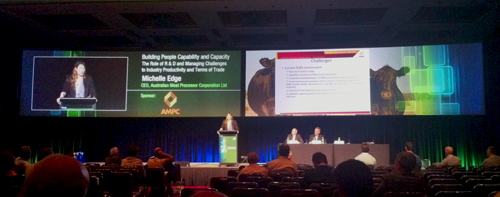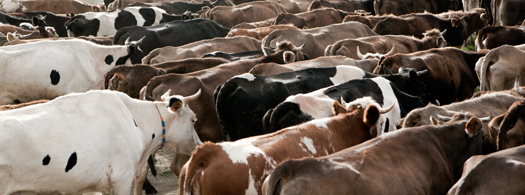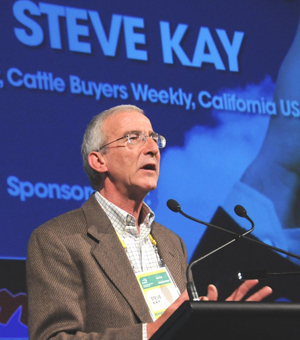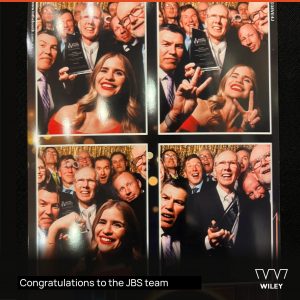After attending the AMIC Conference last week and positing his predictions for this year’s annual gathering in a blog we published last week (you can read it here). I (Peter Walsh) checked back in with Peter Bullock, Business Development Manager, to find out how the conference went.
So, Peter, can you first fill us in on what the AMIC Conference is and what it’s all about?
PB: The annual conference brings together key players from across the industry, including: processors, suppliers and industry bodies in a forum designed to educate and inform on the important issues facing the industry. It also provides an excellent network venue for delegates to renew old acquaintances and develop new relationships which can be of benefit far into the future. There is always something new to learn and new people to connect with and the AMIC conference is an excellent event that fosters this professional growth.
The theme for this conference was People, Process and Performance, it focused on the challenges facing the Australian meat industry in a fast changing global environment and how to manage that change while maintaining Australia’s position as an elite provider of high quality red meat products. The growth of some of Australia’s most important export partners was a key feature in the presentations with China and Indonesia being prominent presentation themes.
Can you tell us about where and when it was held? Who was there? Were there any of the high rollers in the meat industry in attendance?
PB: This year’s AMIC conference was held at the Royal Pines Resort on Queensland’s Gold Coast over the 18th and 19th of September; a location that was sure to attract meat industry delegates from across both the industry and Australia.
In addition to processors there was a big attendance from suppliers to the meat industry which was reflected in the number of stands at the AMIC trade show. Suppliers of cleaning systems and chemicals to processing facilities were prominent with four key players present including Jasol, Birko Corporation, Euro Pumps and Ecolab. Other key suppliers were Marel promoting their Innova production software, G & B Stainless, Milmeq, Retracom, Introlox and Visy Board.
Key processors in attendance were AACo, Australian Country Choice, JBS, Kilcoy Pastoral Company, Teys Australia and Stanbroke Beef and many others. The processors were dominated by the beef processors with only a small contingent from lamb and pork industry.
Now, AMIC is quite a large group, can you give us an idea of how broad the conference was? Did it showcase a good cross-section of the industry?
PB: There were 330 delegates pre-registered with a number of others registering on arrival. The overall perception was that it was a larger event than last year’s conference in Adelaide with more delegates participating. The view of one processor that I spoke to was that the number of people attending these types of conferences is related to the level of confidence in the industry and that this was reflected at this year’s conference with the improving exchange rate and the resulting growth and profitability in the export market.
What were your greatest impressions from this year’s AMIC Conference?
PB: The conference was both enlightening and stimulating. The story on China’s growing demand for beef delivered through the voice of Brady Sidwell, Vice President, Corporate Development and Strategy, OSI Group Asia Pacific, Middle East and Africa demonstrated clearly why Australia needs to both understand this huge market potential and position itself correctly to take full advantage of the opportunities.
The presentation from Steve Kay, Editor in Chief, US Cattle Buyers Weekly (pictured above) about how social media can be both an aid to growing business and contribute to a downfall if not handled correctly during a crisis was an eye opener! We all focus on using social media to get positive messages out there and spread the word but it can also be used to spread negative news when things go wrong much more quickly than with traditional news sources.
The spread of news through social media is instant and therefore the response to negative news must be rapid and decisive. It is clear that we all need to be educated in the use of social media in a business setting to both gain best advantage and to handle the release of negative news.
What do you see as the value of the AMIC Conference to the red meat industry?
PB: Attending AMIC is educational, informative and contributes to relationship building, it’s an extremely important event with benefits that last the 12 months to the next event and beyond. Key industry players, suppliers and industry bodies all under one roof at the same time makes for an supremely valuable experience in building ties with the industry; further developing the growth necessary within the red meat sector.
Who did you get to chew the fat with? Were there any speakers that addressed areas of interest for you?
PB: Conversations with Marel unveiled their continued growth and penetration of the market with their Innova Production Software which is fast becoming the Manufacturing Execution Software of choice for food processors globally, particularly in the meat industry. The saying ‘if you don’t measure it, you can’t manage it’ is catching on and being well understood.
Martin Kneebone, the Managing Director of Freshlogic (pictured below) presented a fine seminar that addressed retail food trends in Australia and got right to the core of what the data is telling us. Primarily his presentation focused on the changing perspectives of food in Australia such as: the growth in interest in food provenance, consumer demand for more information regarding their food, the popularity of online food purchasing, and the growing trend in ready meals.
Furthermore, Martin highlighted the changes in purchasing that have probably gone unnoticed, for example, online ordering to refrigerated letterboxes is truly innovative in the retail food market. More consumers are utilising local supermarkets more often especially in urban areas, as society trends towards more retail ready meals than conventional cooking. Ready meals combines the quality of eating out with the convenience and value of eating in, and as such is a sector that is set to grow rapidly in the future.
I feel that this truly affirms our belief at Wiley, that ready meals is a market that will need new facilities and processes as it continues to grow.
Were there any particular innovations or ideas presented that really caught your eye?
PB: The use of social media, social media news, and its management. The services of companies like Meltwater News to analyse digital media documents globally is really quite innovative. Social media news is very fast, almost instant, but can be inaccurate. No two people describe the same thing the same even if they both witnessed the event at the same place and time. Meltwater analyses social media releases very quickly and can provide information to companies to assist in how to respond rapidly to otherwise negative portrayal in the media.
In your opinion, was the conference a successful one?
PB: The conference was very successful. The presentations were both educational and informative. I had the opportunity to renew some old business relationships and develop new ones which is always invaluable. This is one of the excellent facets of business that the conference facilitates, I was able to meet with a number of suppliers and processors, many of whom look forward to conducting business with Wiley in the future.
Who was best in show and why do you think they deserve such an august accolade?
PB: Brady Sidwell, (pictured below) the Vice President of Corporate Development and Strategy for OSI Group Asia Pacific, Middle East and Africa, delivered a stirring presentation entitled ‘Rationalising China’s Insatiable Appetite: The Evolution of Red Meat Demand’. Brady was an inspirational speaker enthusing the audience with both startling statistics and interesting facts, combined with humour.
To summarise his presentation, China’s appetite for beef is being driven by their growing middle class and increasing affluence, this is an area of potential market growth that the Australian red meat industry cannot afford to squander. The middle class in China is estimated to be 300,000,000 people (the entire population of the USA) and is expected to grow by 27,000,000 people per year (more than the entire population of Australia)! This increase is linked to urbanisation and the growth of wages. Forecasts show that the traditional consumption of pork will decline while beef and poultry consumption will increase.
While speculations about China’s slowing growth abound this year’s forecast of 7.4% remains the envy of the developed world. The combination of urbanisation, a growing market and increasing affluence will result in a moving trend toward a restaurant or eating-out oriented culture, which further underwrites the rising demand for beef. China’s middle class consumers are picky and demand high quality product, this is the driver behind their desire for Australian beef; particularly as imported products are perceived to be of higher quality than domestic products.
However, it is also pertinent to understand that given traditional Chinese meat consumption the Chinese market will not yet be hungry for steaks and joints, rather their hunger will be best satisfied with very lean cuts with a finer texture, cut into small pieces.
Finally, in one sentence, can you summarise your experience of the 2013 AMIC Conference?
PB: Attending the AMIC 2013 conference left me better informed about the challenges and opportunities facing the industry today and about how China can be a significant force in the future of Australia’s beef industry and overall I was left feeling stimulated and hungry for more!
Connect on Linkedin with Peter Bullock









